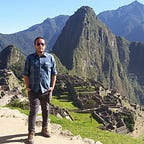Digital Preservation of World Heritage: Tikal, Guatemala
World Heritage Sites constantly face problems and deterioration issues that threat the integrity of their cultural assets. These problems range from local problems such as socioeconomic underdevelopment, to global problems such as climate change. In such context, modern means of preservation have a key role in protecting World Heritage.
Nowadays there is variety of digital resources available for this purpose. Photogrammetry, 3D modeling, Aerial Imaging and Laser Scanning are some of the most useful techniques used by archaeologists and heritage experts in order to digitally preserve World Heritage (e.g., Campanaro et al., 2016; Galeazzi, F., 2016 McCarthy, 2014; Pieraccini et al., 2001). These methods have been put into practice at various sites of the World Heritage List, starting to create an important database of digital representations for some of these sites. A good example of this process can be observed in Tikal National Park (Figure 1).
Tikal is located in the province of Petén, in the northern part of Guatemala. It was inscribed as a World Heritage Site in 1979, and it was classified as a mixed site due to its cultural and natural wealth. The site contains Mayan temples and palaces from the 6th century B.C. to the 10th century A.D., and it is part of a larger Maya Biosphere Reserve. Both of these aspects make Tikal one of the most important cities of Mayan civilization (UNESCO, 2017).
In order to create a digitalization of this site (Figure 2), a joint project between the University of California in Berkeley and CyArk was carried out to make this goal possible. The project was mainly intended to produce a spatial database that would support evaluations and restoration works in Tikal. This is particularly important since the park is facing deforestation problems, and it has been threatened with intense development of urban infrastructure and tourism. In addition, during this project a workshop about conservation of World Heritage was provided in a joint effort with UNESCO to address these issues (Galicia, 2014).
3D digitization techniques meet the needs of methodologies and procedures that deal with conservation and archiving of cultural heritage. Creating 3D models of cultural materials and heritage sites is a reliable and accurate mean to conserve these cultural assets for the future (Pieraccini et al., 2001). In fact, other projects have been developed in several sites of the Mayan region producing positive results. Some of the information that you can find from this type of projects include: 3D models, models in Google Earth, multimedia, raw data, and GIS maps (Maya Arch 3D, 2017).
The most important aspect that must be considered from examples like the Tikal National Park, is that application of digital tools and technologies is becoming a crucial part of the preservation of World Heritage Sites. UNESCO, as well as other organizations, are encouraging the use of digital tools to protect patrimony. The benefits from using these methods go beyond the creation of databases. Digital tools are very useful in monitoring deterioration, documentation and recording, restoration of tangible heritage, research on World Heritage Sites, and enhancement of educational resources.
Resources such as digital preservation become a valuable tool for UNESCO and heritage professionals that work on the restoration, documentation and conservation of World Heritage Sites. Digitalization of cultural and natural patrimony is not only a way to preserve the World Heritage Sites that we currently have, but also a way to educate future generations about World Heritage and its importance.
References
Campanaro, D., Landeschi, G., Dell’Unto, N., Leander Touti, A., 2016. “3D GIS for cultural heritage restoration: A ‘white box’workflow.” Journal of Cultural Heritage 18, pp. 321–332.
Galeazzi, F., 2016. “Towards the definition of best 3D practices in archaeology: Assessing 3D documentation techniques for intra-site data recording.” Journal of Cultural Heritage 17, pp. 159–169.
Galicia, A. L., 2014. La digitalización de Tikal, Guatemala. Arqueología 3.0. Retrieved: April 09, 2017, from
http://arquelogiatrespuntocero.blogspot.com/2014/01/la-digitalizacion-de-tikal-guatemala.html
Maya Arch 3D. (n.d.). Retrieved: April 10, 2017, from
http://www.mayaarch3d.org/language/en/links-to-related-projekts/
McCarthy, J., 2014. Multi-image photogrammetry as a practical tool for cultural heritage survey and community engagement. Journal of Archaeological Science 43, 175–185.
Pieraccini, M., Guidi, G., Atzeni, C., 2001. “3D Digitizing of Cultural Heritage”. Journal of Cultural Heritage 2, pp. 63–70.
Tikal. (n.d.). CyArk. Retrieved April 11, 2017, from
http://www.cyark.org/projects/tikal
Tikal National Park. UNESCO Centre. Retrieved: April 2, 2017, from http://whc.unesco.org/en/list/64
